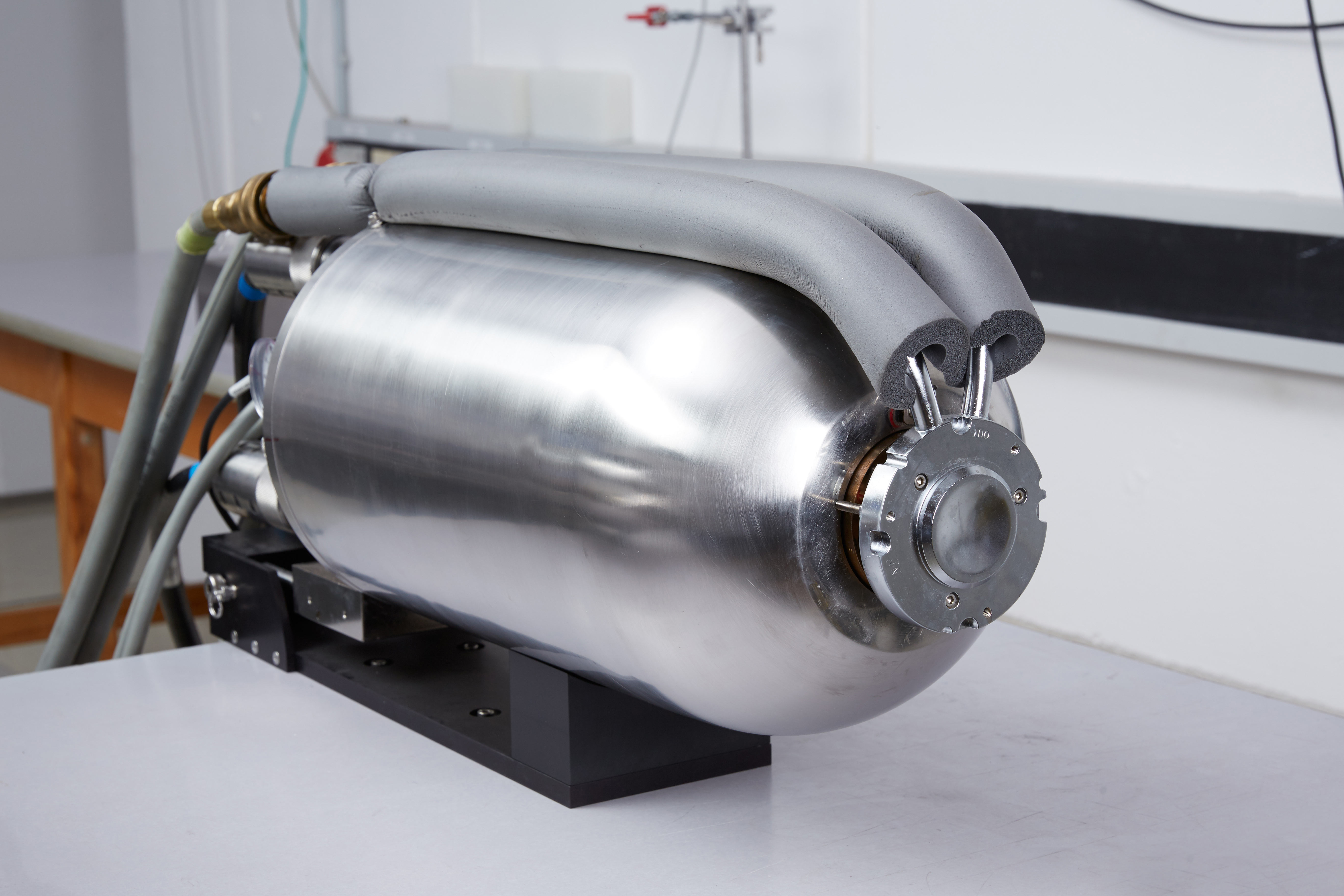Fraunhofer INT offers two neutron generators which are suitable for investigating displacement-damage effects in electronic or optical components. They can also be employed to simulate single event effects (SEE) caused by atmospheric neutrons.
THERMO-Fisher D-711 neutron generator
The THERMO-Fisher D-711 neutron generator at Fraunhofer INT accelerates deuterium ions (D = 2H) with a typical voltage of 150 kV. These nuclei are focused and hit onto deuterium or tritium targets (T = 3H). Inside the target D-D or D-T fusion reactions are stimulated which produce helium isotopes (3He or 4He) and fast neutrons with energies of 2.5 MeV (for D-D reactions) or 14.1 MeV (in the case of D-T reactions).
At a typical acceleration voltage of 150 kV and 2.5 mA up to 3·1010 neutrons/s in 4π-steradian are produced with a new tritium target. Based upon the fact that the energy of the neutrons (14 MeV) is much larger than the kinetic energy of the deuterium ions (~150 keV) the emission is nearly isotropic and the intensity falls off as 1/r2 with r being the distance from the tritium target which can be as small as 1 cm. Even at such short distances the emission can be approximated as being isotropic with high certainty because the emission point has a very small diameter (2 mm).
Dosimetry at THERMO-Fischer D-711
The neutron fluence is monitored online during the irradiation with calibrated uranium fission chambers from LND, INC. The chambers have been calibrated in collaboration with the Physikalisch-Technische Bundesanstalt in Braunschweig (the National Metrology Institute of Germany).
 Fraunhofer Institute for Technological Trend Analysis INT
Fraunhofer Institute for Technological Trend Analysis INT